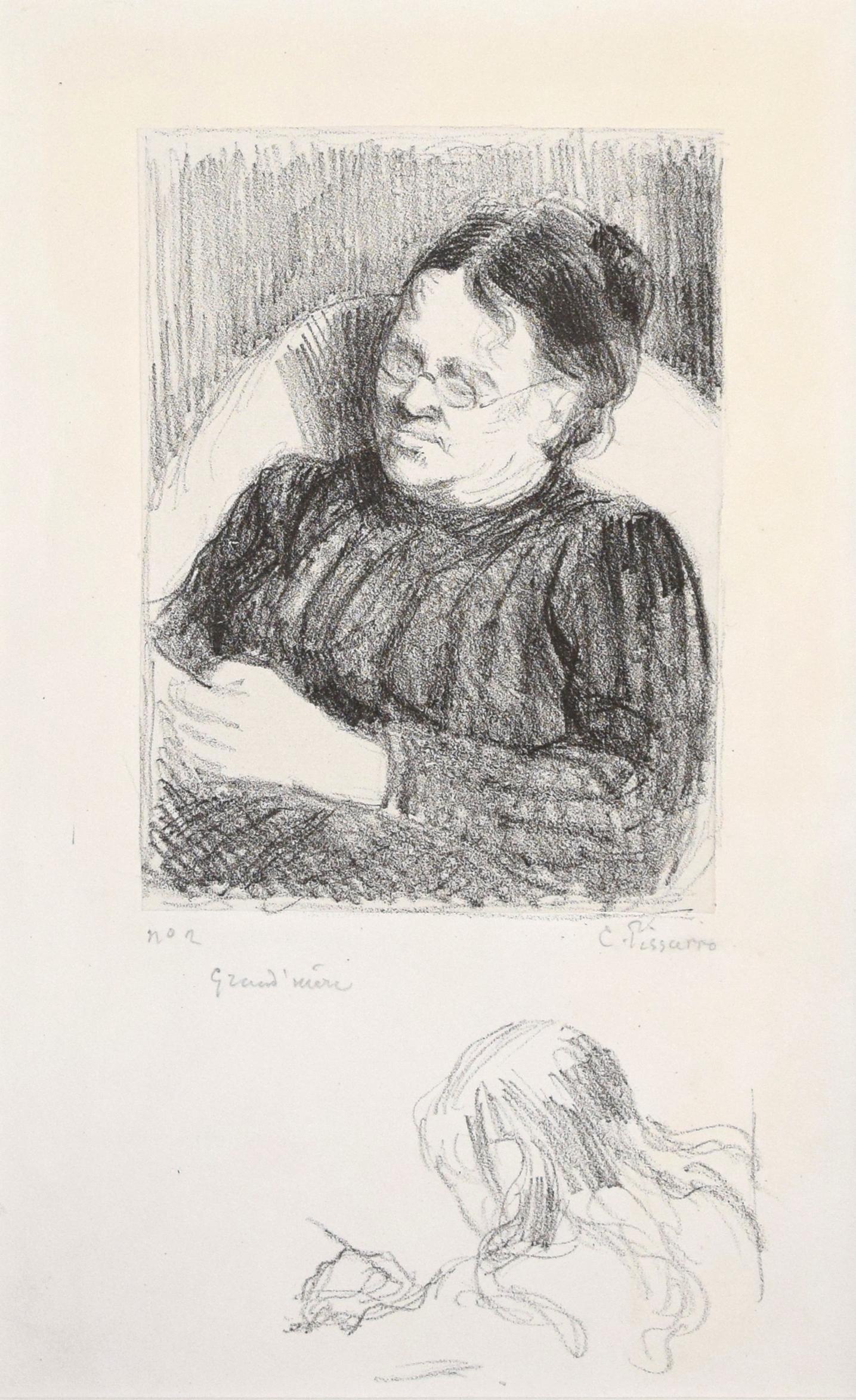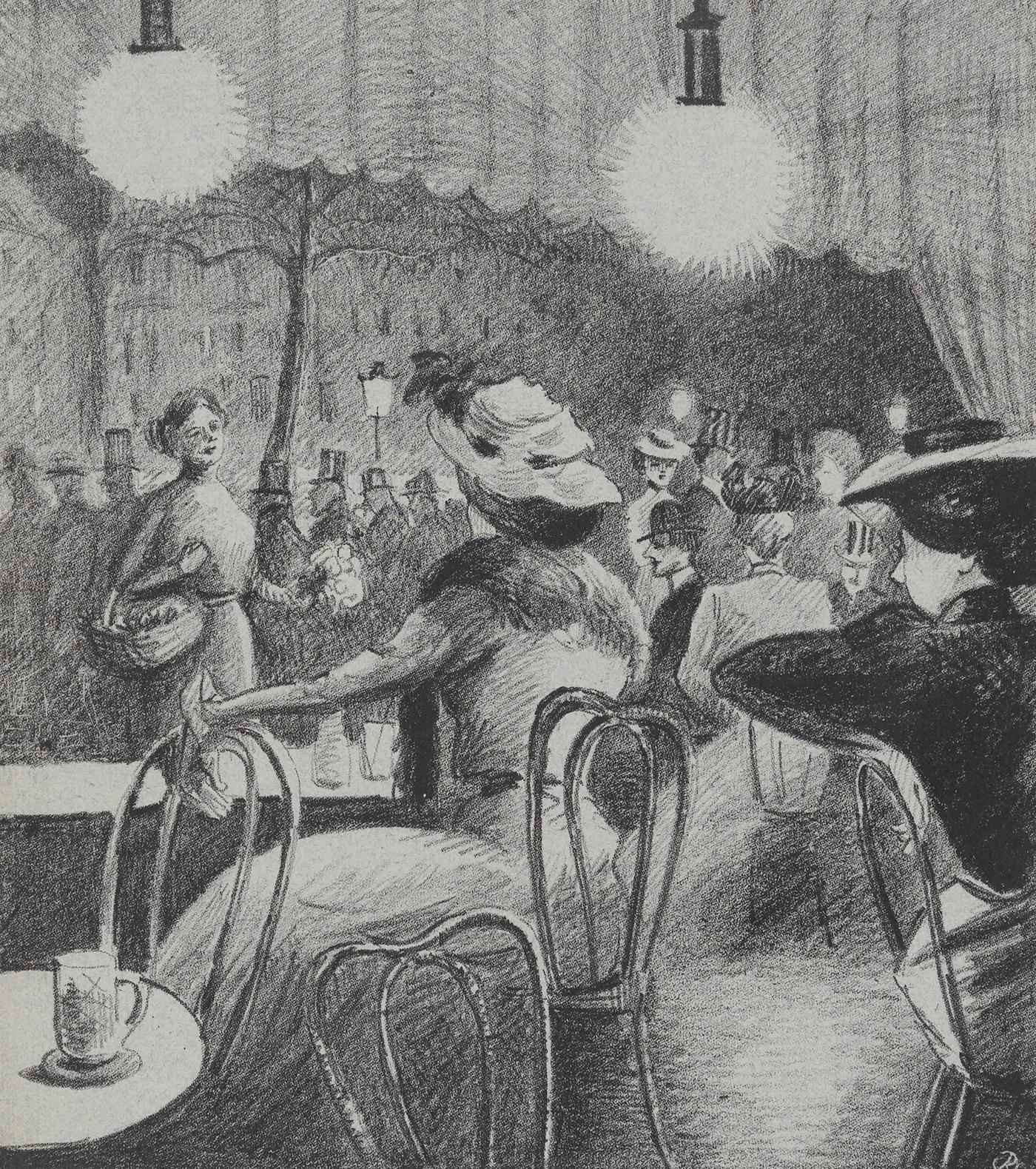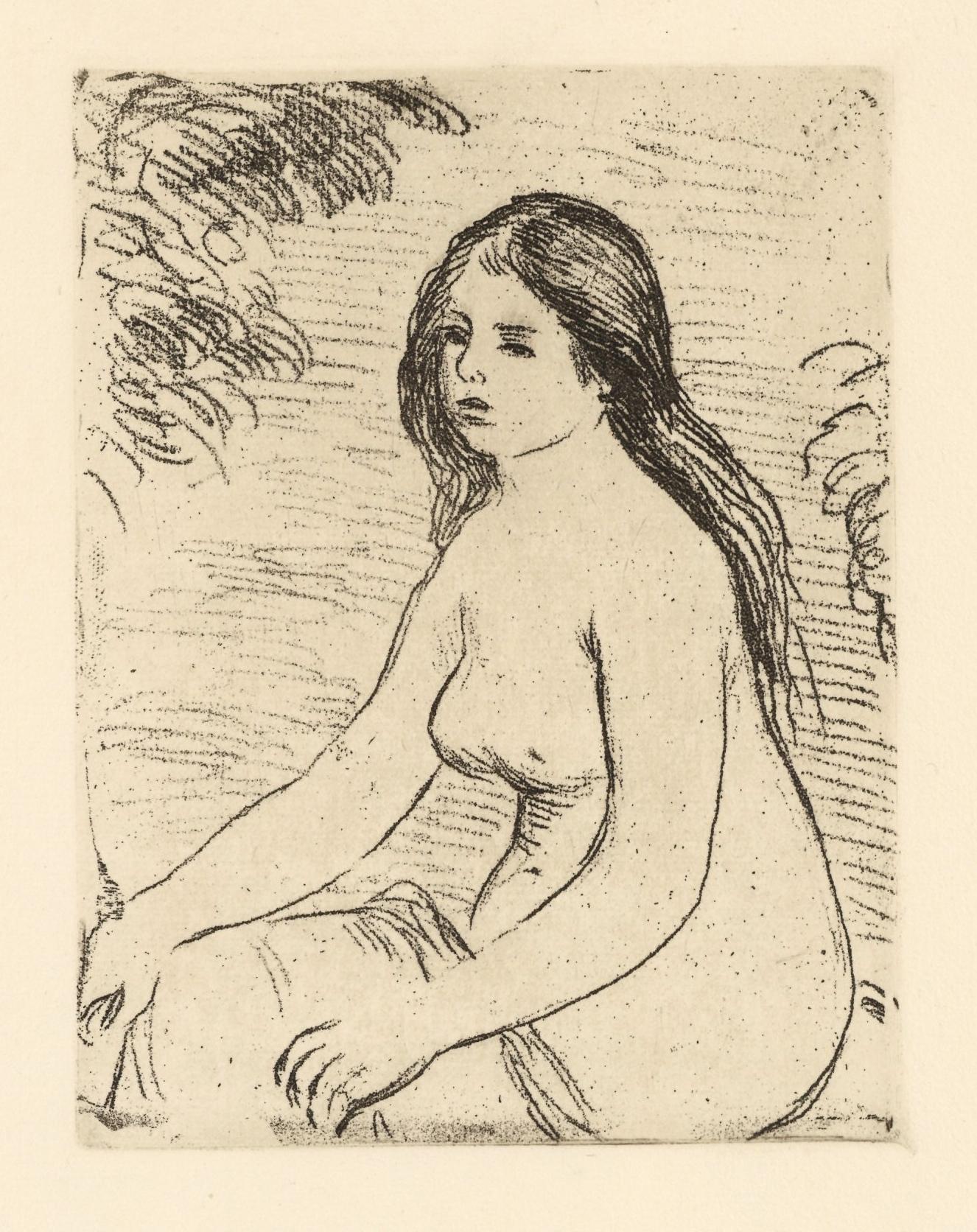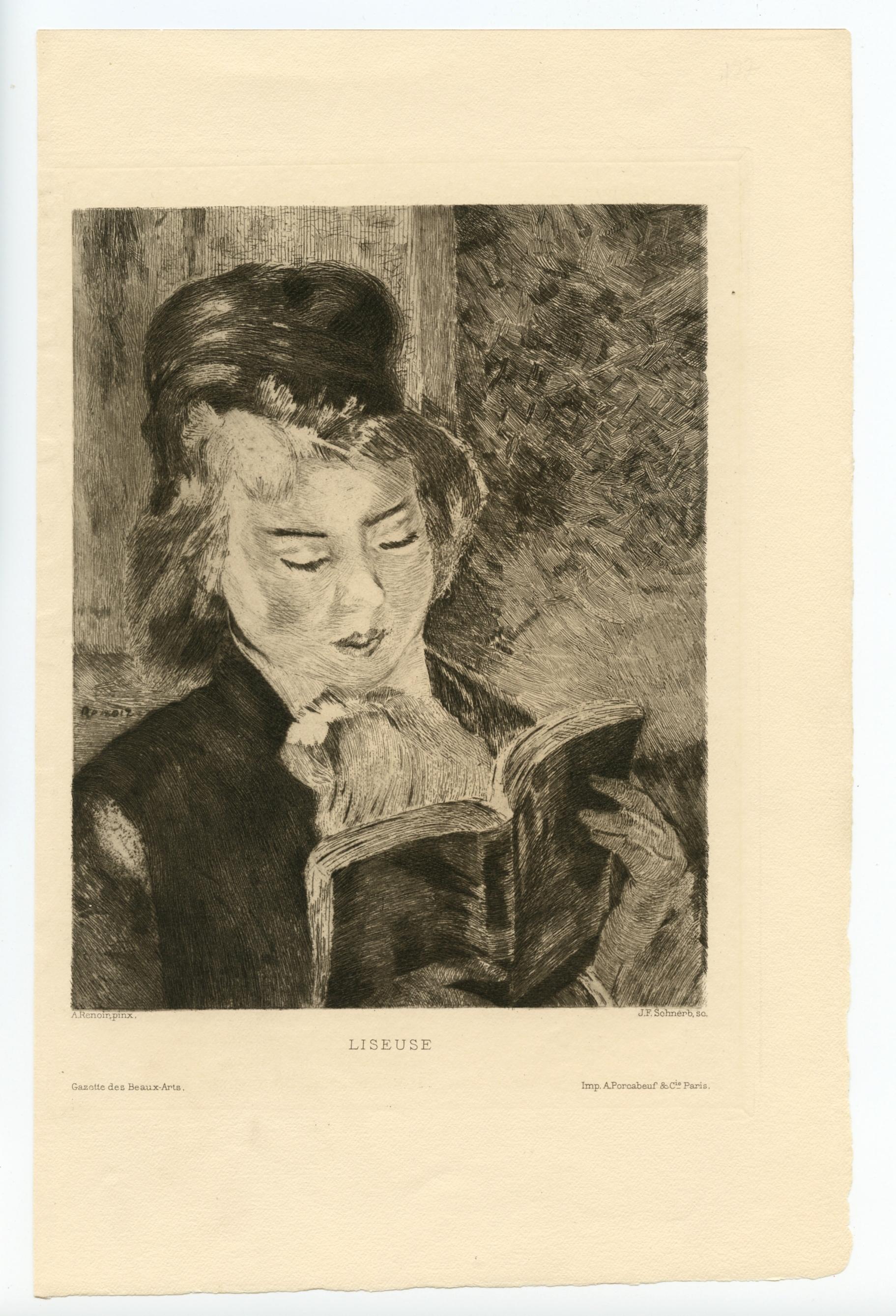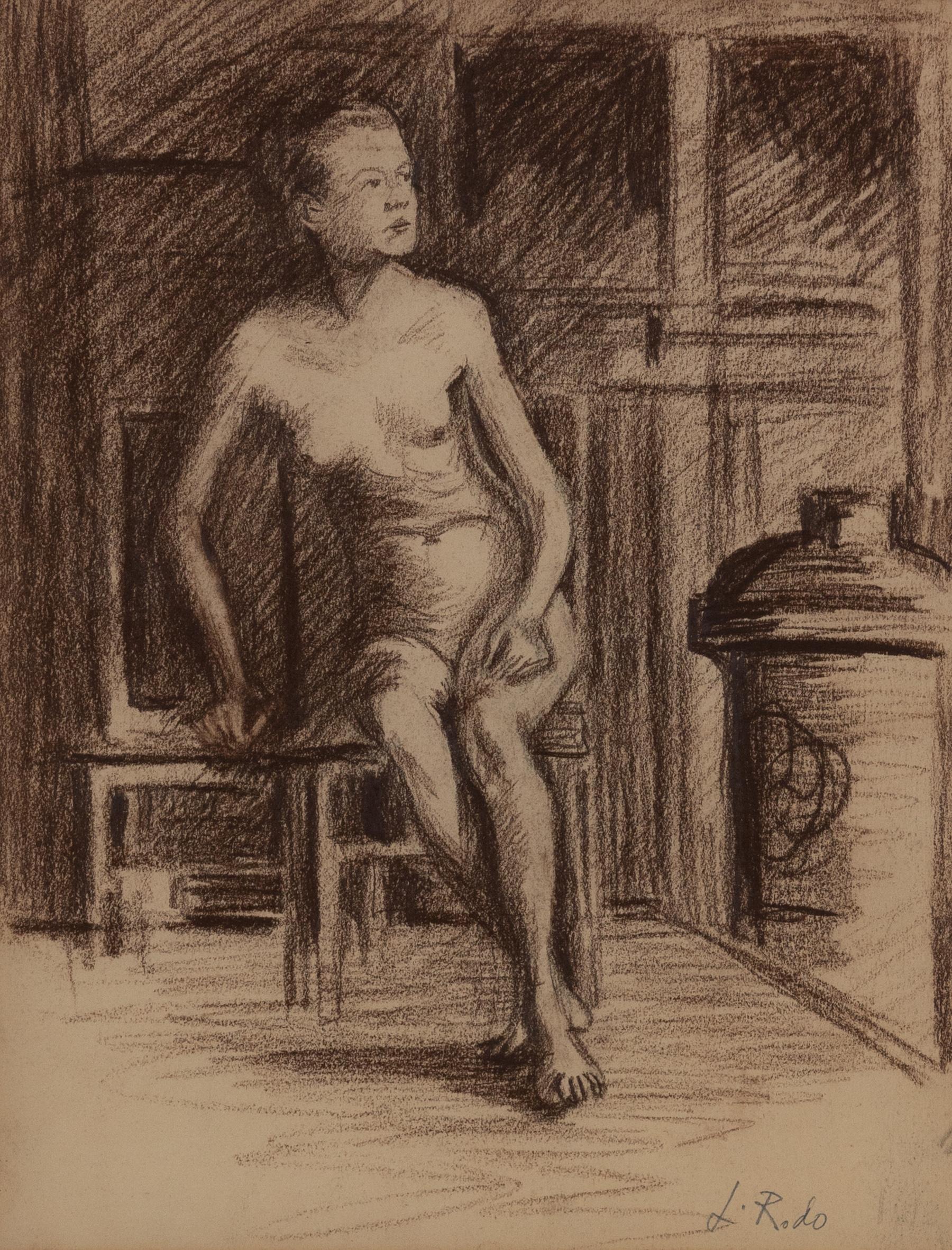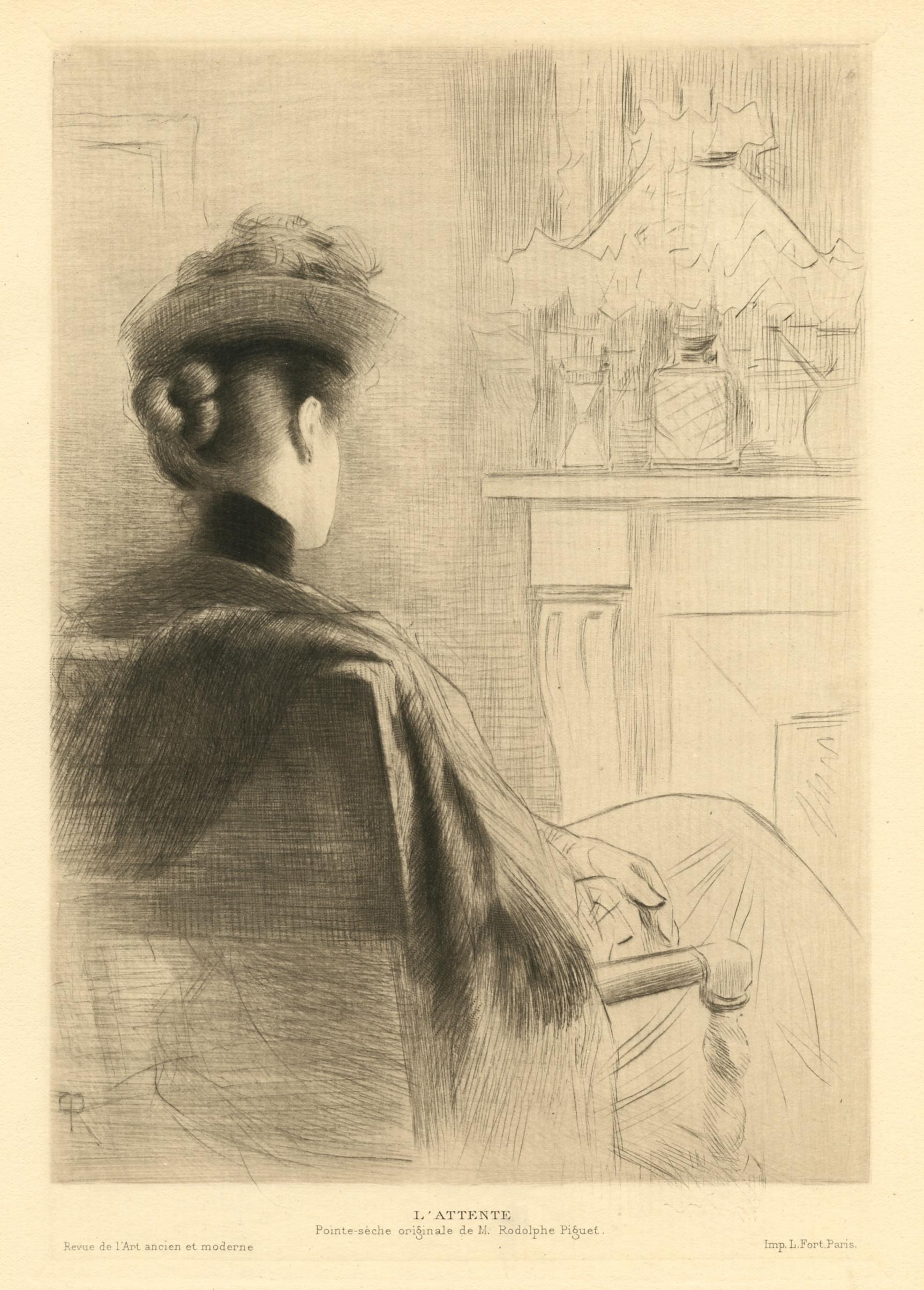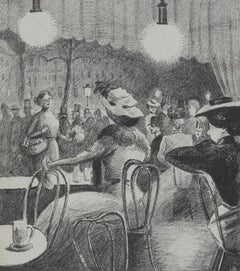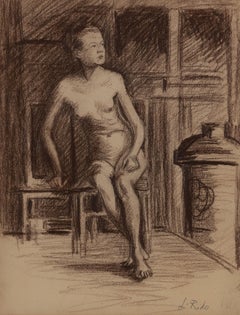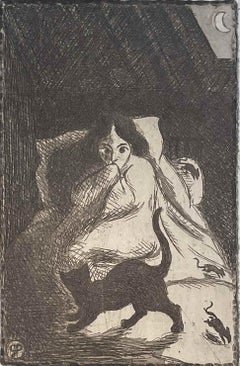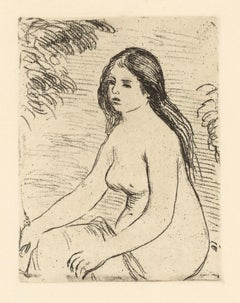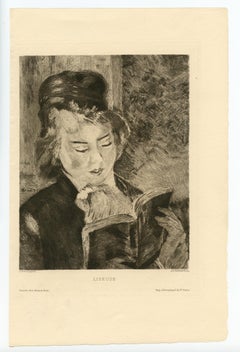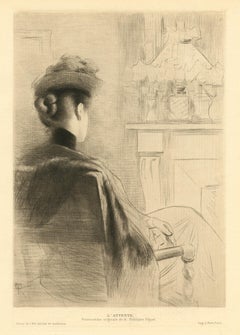Items Similar to Une Femme Assise by Lucien Pissarro - Etching
Want more images or videos?
Request additional images or videos from the seller
1 of 5
Lucien PissarroUne Femme Assise by Lucien Pissarro - EtchingCirca 1890
Circa 1890
$2,442.80
£1,800
€2,100.90
CA$3,384.54
A$3,678.86
CHF 1,969.36
MX$44,468.94
NOK 24,817.71
SEK 22,888.38
DKK 15,690.37
About the Item
Une Femme Assise by Lucien Pissarro (1863-1944)
Etching
23 x 13 cm (9 x 5 ¹/₈ inches)
Stamped lower right, L.P. and numbered lower left, 10/20
Provenance: John Bensusan Butt
Private collection, UK, gifted from above in 1967
One of the most beautiful etchings we have seen by this important Impressionist artist!
Artist biography:
Born on the 20th February 1863, Lucien Pissarro was the eldest son of the Impressionist painter Camille Pissarro. Coached from a young age by his father and in the frequent company of figures such as Cézanne, Gauguin and Monet, it is no surprise that Lucien chose to pursue an artistic career. While he is best known as a landscape painter, Lucien was also a printmaker, wood engraver and printer of fine books, occasionally painting still lifes and portraits of his family.
Lucien first visited England in 1870 with his family when fleeing the Franco-Prussian war. It was the beginning of a great love affair with the country. He decided to move permanently to England in 1890, becoming an English citizen in 1916. Until then he had worked as a landscape painter and book illustrator in France. During this period he met and worked with painters such as Paul Signac, Georges Seurat and Vincent van Gogh. Moving simultaneously in Impressionist and Neo-Impressionist circles, Lucien exhibited Pointillist paintings with his father in the last Impressionist exhibition in 1886. In the same year he was one of the first artists to exhibit in the “Salon des Indépendants” as a Neo-Impressionist.
Despite his close relationship with his father, as revealed in their correspondence, Lucien showed remarkable independence of mind in his approach to his art. While Lucien was trained by his father, the influence the artists had on one another was reciprocal. Thanks to his relationship with Seurat and Signac, Lucien encouraged Camille to experiment with Pointillism, a characteristic of the Neo-Impressionist group.
Lucien’s move to England in 1890 allowed him greater freedom to pursue his interest in book illustration and printing. There Lucien and his wife Esther established the Éragny Press, named after the Normandy village where his family lived since 1884. The Éragny Press was principally notable for creating aesthetically pleasing books and paved the way for the development of European book art. Lucien’s illustrations for these books demonstrate his talent and command of colour.
Nevertheless, Lucien always considered painting his primary concern, particularly landscape painting. Continuing the tradition of the Impressionists, Lucien was a plein-air painter who liked to work outdoors and study the subject directly from nature. His landscapes reveal his fascination for the effects of weather and light. The contemporary art critic Frank Rutter described Lucien as a master of colour, writing in 1922: “there is no man living who has a more profound knowledge of the science of colour, or a more discriminating eye for its observation in nature.” Rutter was also struck by Lucien’s respect for his subject, nature itself: “Each canvas is wrought with a quiet perfection that conceals its art and is eloquent of the tender emotion which the loveliness of nature inspires in the artist.”
It is clear from Rutter’s praise that Lucien’s contemporaries were impressed by his combination of English and French artistic traditions. Unsurprisingly, he became associated with artistic groups that drew inspiration from the Impressionists, including the New English Art Club, with whom he exhibited in 1904, the Fitzroy Street Group in 1907 and the Camden Town Group in 1911. To his English contemporaries Lucien represented a direct link to the Impressionist Masters. His influence can be recognised in the work of British artists such as Spencer Gore, Harold Gilman and Walter Sickert, who acknowledged Lucien’s influence, writing in 1914: “Mr Pissarro, holding the exceptional position at once of an original talent, and of the pupil of his father, the authoritative depository of a mass of inherited knowledge and experience, has certainly served us as a guide.”
Since his first solo exhibition at the Carfax Gallery in May 1913, Lucien Pissarro’s work has been featured in countless exhibitions and galleries. During his lifetime Lucien donated his estate to the Ashmolean museum in Oxford, where a permanent collection of his work is still housed today. His works are featured in every major art museum in England, as well as the Musée d’Orsay in Paris, the National Gallery of Australia and many museums in the USA.
- Creator:Lucien Pissarro (1863 - 1944, French)
- Creation Year:Circa 1890
- Dimensions:Height: 9.06 in (23 cm)Width: 5.12 in (13 cm)
- More Editions & Sizes:nonePrice: $2,443
- Medium:
- Movement & Style:
- Period:
- Condition:
- Gallery Location:London, GB
- Reference Number:1stDibs: LU261212909452
About the Seller
5.0
Recognized Seller
These prestigious sellers are industry leaders and represent the highest echelon for item quality and design.
Established in 1964
1stDibs seller since 2015
104 sales on 1stDibs
Typical response time: 8 hours
Associations
Society Of London Art Dealers
- ShippingRetrieving quote...Shipping from: London, United Kingdom
- Return Policy
More From This Seller
View AllPosies for the Ladies by Ludovic-Rodo Pissarro - Lithograph
By Ludovic-Rodo Pissarro
Located in London, GB
Posies for the Ladies by Ludovic-Rodo Pissarro (1878-1952)
Lithograph
25.5 x 22.5 cm (10 x 8 ⅞ inches)
Stamped with initials lower right and numbered lower left 6
Executed circa 19...
Category
Early 1900s Figurative Prints
Materials
Lithograph
Nu Assise by Ludovic-Rodo Pissarro - Nude drawing
By Ludovic-Rodo Pissarro
Located in London, GB
Nu Assise by Ludovic-Rodo Pissarro (1878-1952)
Charcoal on paper
31.3 x 24.2 cm (12 ⅜ x 9 ½ inches)
Signed lower right, L.Rodo
This work of art is accompanied by a certificate of authenticity signed and dated by Lélia Pissarro.
Artist biography:
Ludovic-Rodolphe Pissarro, born in Paris in 1878, was Camille Pissarro’s fourth son. Encouraged by his father, he began drawing from nature at an early age. He was familiarly known as “Rodo” and generally signed his works "Ludovic-Rodo", or early on in his career simply "Rodo".
The impact of Camille’s art and teaching on Rodo was considerable. His artistic production encompassed a wide range of media, including oil painting, tempera, watercolour, gouache, wood engraving, drawing and lithography. Rodo exhibited regularly at the Salon des Indépendants over a forty-year period.
In 1894, at the age of sixteen, Rodo published his first wood engravings in the anarchist journal, Le Père Peinard. When Camille left France for the safety of Belgium during the anarchist upheavals of the same year, Rodo joined him there.
Rodo moved into his first studio in Montmartre with his brother Georges in 1898. Works of this early important period until just after the death of his father in 1903 were post-impressionist and clearly painted under the influence of his father.
By 1904 living in Paris, he found the nightlife and the habitués of the cafes, theatres, circuses and cabarets compelling subjects for his work and changed dramatically the style of his painting, affiliating himself to the Fauve artists. Rodo became close to artists such as Kees Van Dongen, Maurice de Vlaminck and Raoul Dufy. In 1905 he participated in the first Fauve exhibition at the Salon des Indépendants. In 1907 he visited Van Dongen in Rotterdam and the two artists continued to paint together, something they often did in Paris.
In 1914 he married, though he never had children. Later that year at the outbreak of the War Rodo moved to England. Over the next seven years he lived mainly in and around West London. He worked closely with his brother Lucien to establish in 1915 the Monarro Group, formed with the aim of exhibiting work by contemporary artists inspired by Impressionism. Many of the works produced by Rodo while he was in England were of London landmarks but, he was also interested in the urbanisation of West London. After 1921, when Rodo had already returned to France, he divided his time between Paris and Les Andelys in Normandy, living and working closely with his elder brother Georges Manzana.
Despite his rich artistic heritage and his achievements as an artist, Rodo is perhaps best remembered for his contribution to art history. For ten years he researched and compiled a catalogue of his father’s paintings...
Category
Early 1900s Post-Impressionist Figurative Drawings and Watercolors
Materials
Paper, Charcoal
Une femme, un chat et des souris by Georges Manzana Pissarro - Etching Print
By Georges Manzana Pissarro
Located in London, GB
SOLD UNFRAMED
Une femme, un chat et des souris by Georges Manzana Pissarro (1871 - 1961)
Etching
13.3 x 8.7 cm (5 ¹/₄ x 3 ³/₈ inches)
Signed on the plate with initials, GP and sign...
Category
1890s Figurative Prints
Materials
Etching
Woman Embroidering (Nini) by Lucien Pissarro - Woodcut
By Lucien Pissarro
Located in London, GB
Woman Embroidering (Nini) by Lucien Pissarro (1863-1944)
Woodcut
15 x 10 cm (5 ⁷/₈ x 4 inches)
Stamped with initials lower right
Numbered lower left, 18/20
Provenance: Private Colle...
Category
20th Century Post-Impressionist Figurative Prints
Materials
Woodcut
Portrait by Orovida Pissarro - etching
By Orovida Pissarro
Located in London, GB
Portrait by Orovida Pissarro (1893-1968)
Etching
25 x 16.5 cm (9 ⁷/₈ x 6 ¹/₂ inches)
Signed and dated lower right, Orovida 1919
Inscribed lower left, Trial proof no. 20 and titled lo...
Category
1910s Figurative Prints
Materials
Etching, Paper
Fille au Pigeon, Etching & Aquatint by Georges Manzana Pissarro
By Georges Manzana Pissarro
Located in London, GB
Fille au Pigeon by Georges Manzana Pissarro (1871-1961)
Etching & aquatint
36 x 13.8 cm (14 ⅛ x 5 ⅛ inches)
Signed lower left
Provenance
Private Collection, London
Exhibition
Fort ...
Category
1910s Art Deco Prints and Multiples
Materials
Etching, Aquatint
You May Also Like
Grand'mère - Portrait de la femme de l'artiste - Lithograph 1895
By Camille Pissarro
Located in Roma, IT
Hand Signed in pencil lower right, titled lower left, inscribed “N°2”.
On Chine Appliqué paper, one of only 10 known impressions
Catalogue Prouté 1973 n.179.
Prov. Paul Prouté, Paris...
Category
1890s Post-Impressionist Figurative Prints
Materials
Lithograph
"Femme nue assise" original etching
By Pierre-Auguste Renoir
Located in Henderson, NV
Medium: original soft ground etching. Catalogue reference: Delteil 12. Executed in 1906, this is a lifetime impression published in 1909 in Berlin by Cassirer for "Kunst und Kunstler...
Category
Early 1900s Impressionist Nude Prints
Materials
Etching
"Liseuse" etching
By (after) Pierre Auguste Renior
Located in Henderson, NV
Medium: etching (etched by Jacques-Felix Schnerb after the Renoir painting). Printed in 1908 at the Alfred Porcabeuf atelier and published in Paris by Gazette des Beaux-Arts. Image s...
Category
Early 1900s Impressionist Prints and Multiples
Materials
Etching
"L'attente" original drypoint
Located in Henderson, NV
Medium: original etching and drypoint. This work by Rodolphe Piguet (sometimes spelled Piquet) was printed in 1904 and published in Paris by the Revue de l'art ancien et moderne. Pla...
Category
Early 1900s Prints and Multiples
Materials
Etching, Drypoint
20th century lithograph realism figurative female print female subject signed
By Maximilien Luce
Located in Milwaukee, WI
"Woman Manicuring Her Nails" is an original lithograph by Maximilien Luce. The artist signed the piece lower right and it is numbered (#7). It features a woman seated in an interior taking care of her nails.
8 1/4" x 5 3/4" image
14 1/8" x 10 3/4" paper
19 1/4" x 16 1/2" frame
Maximilien Luce (1858 – 1941) was a prolific French Neo-impressionist artist, known for his paintings, illustrations, engravings, and graphic art, and also for his anarchist activism. Starting as an engraver, he then concentrated on painting, first as an Impressionist, then as a Pointillist, and finally returning to Impressionism.
Gausson and Cavallo-Péduzzi introduced Luce in about 1884 to the Divisionist technique developed by Georges Seurat. This influenced Luce to begin painting in the Pointillist style. In contrast to Seurat's detached manner, Luce's paintings were passionate portrayals of contemporary subjects, depicting the "violent effects of light". In addition to Pissarro and Signac, he met many of the other Neo-impressionists, including Seurat, Henri-Edmond Cross, Charles Angrand, Armand Guillaumin, Hippolyte Petitjean, Albert Dubois...
Category
Early 1900s Victorian Figurative Prints
Materials
Lithograph
"La pensée" etching
By (after) Pierre Auguste Renior
Located in Henderson, NV
Medium: etching and drypoint (after the painting). This beautiful piece was etched by Emile Lequeux after Renoir, and published in Paris in 1904 by Gazette des Beaux-Arts; and is ref...
Category
Early 1900s Impressionist Prints and Multiples
Materials
Etching
More Ways To Browse
Harold Gilman
Lew Davis
Lucky Strike Cigarettes Vintage
Marc Chagall Lithograph Chloe
Marc Chagall Lithograph Flowers
Marion Davies
Martin Lewis Etching
Metropolitan Opera Poster
Metropolitan Opera Vintage Posters
Mexican Woodcut
Michelangelo Etching
Murakami Flower Ball
New Orleans Jazz Art
Original Toulouse Lautrec Lithograph
Peter Sager
Picasso Saltimbanques
Picture Of Dorian Gray
Pierre Casanova
